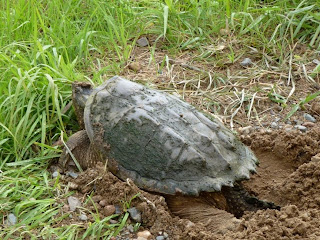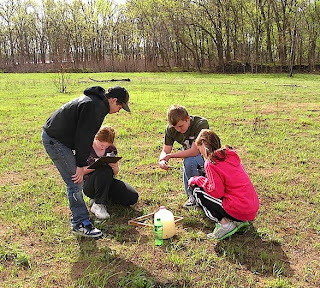Most of the Fall warblers we see are migrating south from their northern breeding grounds. Identification is a challenge because they no longer have the distinctively colored breeding plumage we see in the Spring migration. Bob projected a series of images comparing spring and fall birds while instructing us about what to look for when not scratching our heads. Following the indoor presentation, we looked around the refuge headquarters, then made a loop around the Prairie's Edge Wildlife Drive, stopping 3 places to look for warblers. We hit pay dirt in the woodlands just past mile marker 5, where we tallied 11 species of warblers, 4 vireos species, blue-gray gnatcatchers, and a few others that showed up. Here's the list.
- Yellow-throated
- Blue-headed
- Warbling
- Red-eyed
- Golden-winged
- Black-and-white
- Tennessee
- Nashville
- Common yellowthroat
- American redstart
- Magnolia
- Blackburnian
- Chestnut-sided
- Black-throated green
- Wilson's
PS. Refuge staff have reported a couple of red-necked phalaropes in areas of the refuge not open to the public. These birds could show up in one of the pools along the Wildlife Drive. And you might be lucky enough to see them.





















































